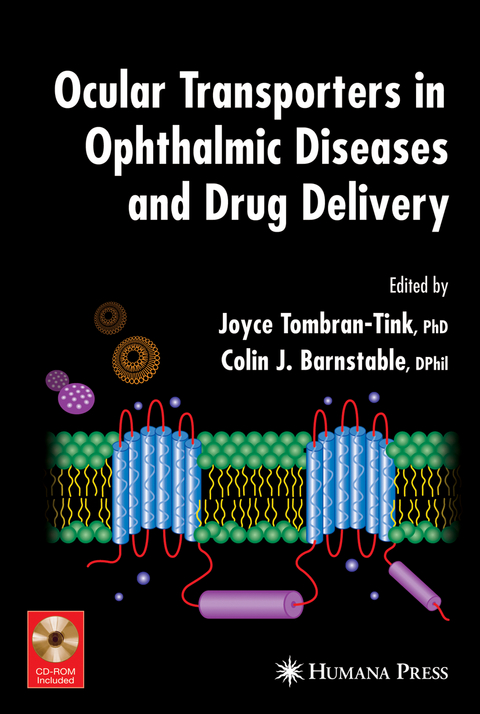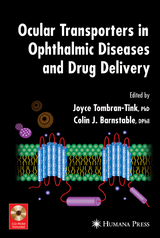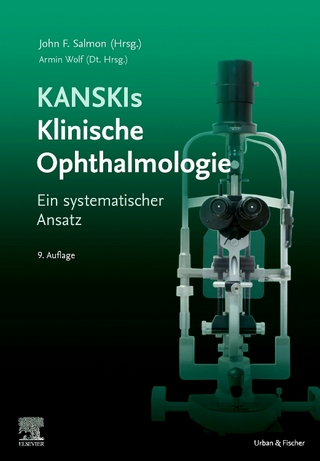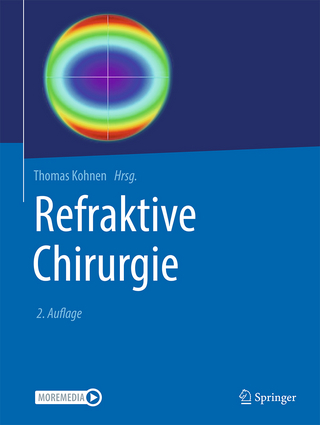Ocular Transporters in Ophthalmic Diseases and Drug Delivery
Humana Press Inc. (Verlag)
978-1-58829-958-1 (ISBN)
Colin J. Barnstable, D.Phil., is Professor and Chair, Department of Neural and Behavioral Sciences Director, Penn State Hershey Neuroscience Research Institute and Co-Director, Penn State Neuroscience Institute Joyce Tombran-Tink, PhD, Department of Neural and Behavioral Sciences, Penn State Hershey Neuroscience Research Institute and Co-Director, Penn State Neuroscience Institute
Transport in the Anterior Segment.- Aquaporins and Water Transport in the Cornea.- Roles of Corneal Epithelial Ion Transport Mechanisms in Mediating Responses to Cytokines and Osmotic Stress.- Vitamin C Transport, Delivery, and Function in the Anterior Segment of the Eye.- Transporters of the Ciliary Epithelium.- Mechanisms of Aqueous Humor Formation.- Lens Transporters.- Membrane Transporters.- Lens Na+, K+-ATPase.- Transport Across the Blood–Retinal Barrier.- Pathophysiology of Pericyte-containing Retinal Microvessels.- Molecular Mechanisms of the Inner Blood-Retinal Barrier Transporters.- Transport Across the Retinal Pigment Epithelium.- Regulation of Transport in the RPE.- Glucose Transporters in Retinal Pigment Epithelium Development.- Ca2+ Channels in the Retinal Pigment Epithelium.- Taurine Transport Pathways in the Outer Retina in Relation to Aging and Disease.- P-Glycoprotein Expression and Function in the Retinal Pigment Epithelium.- Transporters in the Retina.- The Retinal Rod NCKX1 and Cone/Ganglion Cell NCKX2 Na+/Ca2+-K+ Exchangers.- Excitatory Amino Acid Transporters in the Retina.- Localization and Function of Gamma Aminobutyric Acid Transporter 1 in the Retina.- Genetic Variants of Ocular Transporters.- Biochemical Defects Associated with Genetic Mutations in the Retina-Specific ABC Transporter, ABCR, and Macular Degenerative Diseases.- Glutamate Transporters and Retinal Disease and Regulation.- Glutamate Transport in Retinal Glial Cells during Diabetes.- Ocular Drug Delivery.- The Emerging Significance of Drug Transporters and Metabolizing Enzymes to Ophthalmic Drug Design.- Barriers in Ocular Drug Delivery.- Ophthalmic Applications of Nanotechnology.- Vitamin C Transporters in the Retina.- The Plasma Membrane Transporters and Channels of CornealEndothelium.
| Reihe/Serie | Ophthalmology Research |
|---|---|
| Zusatzinfo | XVIII, 467 p. |
| Verlagsort | Totowa, NJ |
| Sprache | englisch |
| Maße | 178 x 254 mm |
| Themenwelt | Medizin / Pharmazie ► Medizinische Fachgebiete ► Augenheilkunde |
| Naturwissenschaften ► Biologie ► Zellbiologie | |
| ISBN-10 | 1-58829-958-9 / 1588299589 |
| ISBN-13 | 978-1-58829-958-1 / 9781588299581 |
| Zustand | Neuware |
| Informationen gemäß Produktsicherheitsverordnung (GPSR) | |
| Haben Sie eine Frage zum Produkt? |
aus dem Bereich




